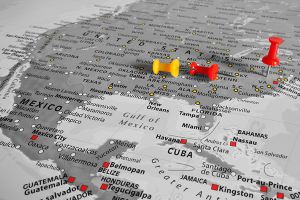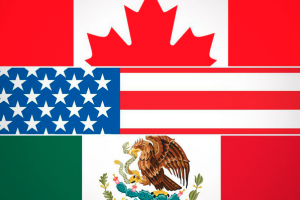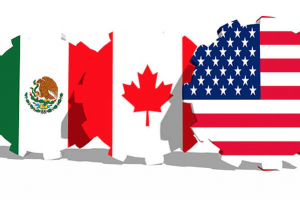Qrius / Pavas Gupta / September 3
Last week heralded further woes for the Indian economy as the rupee touched its lowest-ever-level of 71 against the dollar. At the same time, GDP forecasts stood at an all-time-high of 8.2% in 2018-19’s Q1. On the other side of the world, the US and China agreed to overhaul the NAFTA deal, bringing relief to the dollar. Read on to know more about what’s been up in the economy, outside and at home:
Indian Rupee slides to record-low at 71 against the greenback
On Friday, the rupee hit an all-time-low at 71 against the US dollar. The primary reason identified behind the drastic drop is persistent demand for the dollar amid rising crude oil prices. This is further reinforced by weak exchange rates of almost all Asian peers of the rupee. Per Forex dealers, the dollar’s strength against its rival currencies on expectations of rising interest rates amid lingering Sino-US trade tensions also weighed on the Indian fiat. To add to all these factors is the growing fear about rising inflation and consistent outflow of foreign funds from the domestic equity market.
“[The] Indian rupee has depreciated around 11 per cent year to date. Higher crude oil prices, demand from defence and oil marketing firms have contributed to the latest bout of weakness. Rupee was overvalued on trade weighted real effective exchange rate. Robust FDI flows in e-commerce companies, healthy forex reserves may limit the downside of the rupee”, said VK Sharma, Head Private Client Group & Capital Market Strategy, HDFC Securities.
US dollar steady post US-Mexico agreement to overhaul trade deal
After the United States and Mexico agreed to overhaul the North American Free Trade Agreement (NAFTA), volatility in the dollar cooled down; the currency is now steady against the euro and a basket of other major currencies. The overhauling of the deal brought optimism amidst global trade tensions.
The agreement to overhaul NAFTA exerted pressure on Canada to consent to new terms with the aim of preserving a three-nation pact.
“[The deal] would be positive for the Canadian dollar, Mexican peso, these currencies that have been sold on the back of higher trade tensions,”, said Shusuke Yamada, currency and equity strategist at Bank of America Merrill Lynch in Tokyo. “Overall, that would be negative for the Japanese yen and the US dollar. That’s positive for the risk assets in general,” he added.
On Tuesday, following two sessions of losses, the dollar index, which gauges the fiat’s performance against six other currencies, fell nearly flat. Later, it edged 0.05% higher to 94.834, making up for the earlier losses.
Ever since it hit a high on August 15, the dollar has fallen more than 2%. This comes amidst US President Trump’s criticism of the Federal Reserve for raising interest rates while the US government attempted to boost the economy.
India poised to become world’s fifth-largest economy in 2019
Finance Minister Arun Jaitley, on Thursday, said that India is expected to outstrip Britain to don the title of the world’s fifth-largest economy in 2019.
“This year, in terms of size, we have overtaken France. Next year we are likely to overtake Britain. Therefore, we will be the fifth largest [economy],” he asserted. Further, he said that the other economies of the world were growing at a much slower rate, adding that India had the potential to rank among the top three economies of the world within a span of 10-20 years.
India’s GDP growth at 8.2% in Q1 of 2018-19
In the first quarter of the 2018-19 fiscal year, ending June 30, India’s economy performed at an impressive rate of 8.2%. This marks India’s highest growth rate since the first quarter of 2016. Gross Domestic Product (GDP) growth was backed by a strong core performance and a healthy base.
These growth figures will be factored in by the monetary policy committee at its next review, which is scheduled for October 3-5.
The sectors of the economy that registered a growth of over 7% include ‘manufacturing, electricity, gas, water supply and other utility services’, ‘construction’, and ‘public administration, defence and other services’.
Foodgrain output to reach new heights in 2017-18
Foodgrain production in India is expected to grown to an all-time-high of 284.83 million tonnes in the 2017-18 crop year, which ended in June. According to the Agriculture Ministry, this burst in output is fuelled by record production of wheat, rice, coarse cereals and pulses after a normal monsoon cycle.
The previous record was pegged at 275.11 million tonnes, in the 2016-17 crop year.
In the Ministry’s fourth advance estimate released on Tuesday, it revised, in the upward direction, the total foodgrain production by 5.3 million tonnes from the earlier projection of 279.51 million tonnes for the current crop year.
“As a result of near normal rainfall during monsoon 2017 and various policy initiatives taken by the government, the country has witnessed record foodgrain production in 2017-18,” the ministry said in a statement.
Qrius / Pavas Gupta / September 3











